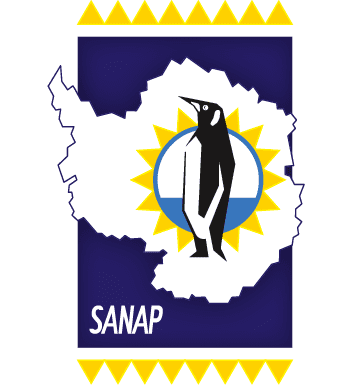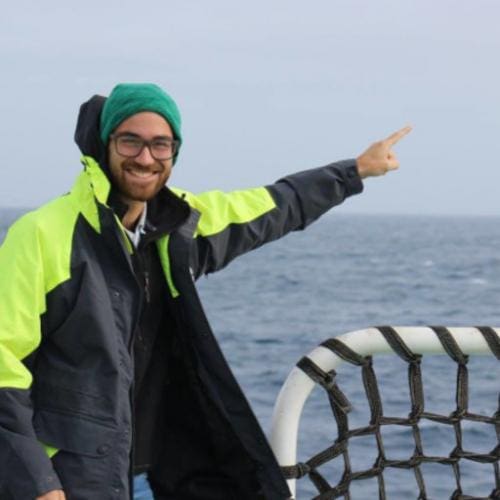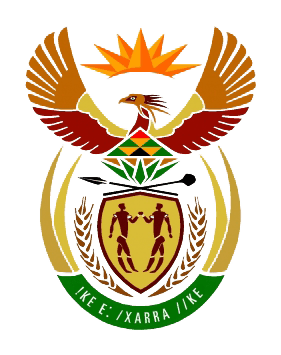The 5th Biannual South African National Antarctic Programme (SANAP) Symposium will be held from 13 – 16 August 2018, in Hermanus (read more here).
This year there will be a large number of 20 minute oral and digital poster presentations (in a 4 minute speed talk oral format). If you are wondering how to structure your scientific poster for this symposium, make sure to take some tips from the two South African early career scientists awarded with the 1st and 2nd prize for the Association of Polar Early Career Scientists (APECS) Poster Awards (Sector: Africa and Middle) at POLAR2018 (SCAR/IASC Open Science Conference 2018).
Winner: Luca Stirnimann, University of Cape Town, Poster Title: “The Island Mass Effect (IME) on carbon cycling in the plankton ecosystem around the Prince Edward Islands archipelago”.
Runner-up: Daniela Monsanto, University of Johannesburg, Poster Title: “Genetic patterns at fine spatial scales: complex findings in a complex landscape”.
More about Luca:
Luca is a PhD student at the University of Cape Town who will use the samples collected on the Antarctic Circumnavigation Expedition (ACE) cruise to investigate zooplankton and phytoplankton dynamics in the Southern Ocean in the context of nutrient cycling and primary production. He will compare ecosystem dynamics in the vicinity of Subantarctic island systems with the open Southern Ocean. Luca graduated summa cum laude in Marine Sciences from the University of Genova – Italy and then spent one year at the Plymouth University – UK pursuing an internship and participating in scientific cruises and volunteer schemes. He is passionate about marine life and thinks plankton are important for healthy marine ecosystems and as an indicator of global environmental change.
The goal of Luca’s PhD is to investigate zooplankton and phytoplankton dynamics in the Southern Ocean, in the context of nutrient cycling and primary production, in the vicinity of Subantarctic island systems and in the open Southern Ocean (including within ocean mesoscale features such as eddies). Expected outcomes of this work include a fundamental understanding of the role of zooplankton in the Southern Ocean nitrogen and carbon cycles, as well as information on the functioning of food webs in response to environmental drivers such as changing nutrients concentrations. The major motivation for this work is a better understanding of Antarctic fertility and planktonic system dynamics and their response to the environmental drivers such as changes in nutrient dynamics. Luca’s results will be of value for developing and improving models of plankton and nutrients dynamics, which will ultimately be important for marine policy development, environmental management, particularly for the Prince Edward Islands, a South African Marine Protected Area (MPA), and for a well-developed ocean economy in the context of the Antarctic fisheries.
Luca’s project falls under the current SANAP Project: “A nitrogen cycle view of atmospheric CO2 sequestration in the Antarctic Ocean” (Principal Investigator: Dr SE Fawcett, University of Cape Town).
More about Daniela:
Daniela Monsanto is a young, vibrant researcher working in the Centre for Ecological Genomics and Wildlife Conservation at the University of Johannesburg. She completed her undergraduate and BSc (Hons) studies at UJ, majoring in Zoology and Biochemistry, and when not working on her MSc, is a passionate soccer player (provincial level).
Daniela has been involved in research on sub-Antarctic Marion Island for the past 3 years (her Honours project introduced her to the Southern Ocean jewels). She has a strong passion for her study area, and understanding how the changing climate impacts sub-Antarctic islands and the species inhabiting them. To this end, her Masters project aims to understand how individuals perceive their specific habitat matrix and how this matrix, and changes within it, might affect local movement (in essence, a landscape ecology/genetic approach). Her study organism is Cryptopygus antarcticus travei, a springtail endemic to the Prince Edward Islands. Her results uncovered complex genetic patterns at the scale of tens to hundreds of meters, with genetic discontinuities between sites separated by less than 20 meters. These complex spatial patterns are potentially driven by microhabitat preferences and/or local adaptations to a heterogeneous landscape across Marion Island. Daniela is taking her research a step further and is in the process of annotating the full genome of C. a. travei; once done, she will be able to identify regions that may be linked to adaptive genes/traits, and use this information to better understand genomic adaptations across different environmental gradients.
Daniela’s project falls under the current SANAP Project: “Biocomplexity: Understanding biological patterns in space and time” (Principal Investigator: Prof B van Vuuren, University of Johannesburg).
Authors: Anché Louw (Antarctic Legacy of South Africa), Luca Stirnimann (University of Cape Town) and Daniela Monsanto (University of Johannesburg), 10 July 2018.






